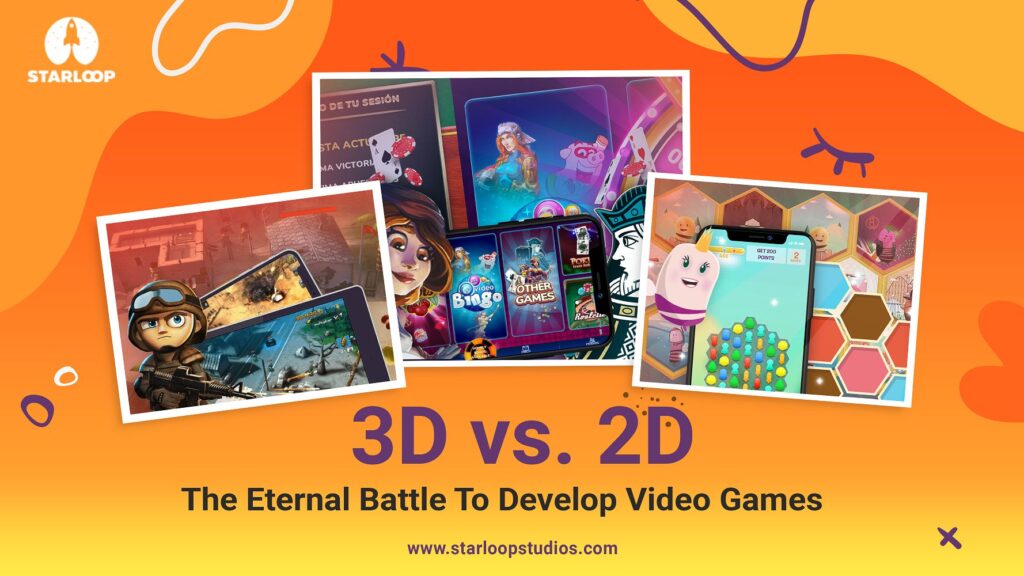The process of creating 2D or 3D graphics for video games involves various stages. Concept art helps define the visual style and design before work on coding or modeling can start. Modelers create virtual objects and characters, refining them and adding details such as curves, edges, and textures. Once the models are textured, they must go through the rigging and animation process before being imported into the game engine, where developers program the logic for game mechanics. While this process is complex, anyone with the passion and ambition to learn can create a video game with visually stunning graphics and immersive gameplay.
Creating 2D and 3D Graphics for Video Games: An Overview
Video games have come a long way since the days of Pong and Space Invaders. Today’s games are often cinematic experiences with visually stunning graphics and immersive gameplay. But have you ever wondered how those graphics are created? This article provides an overview of the process for creating 2D and 3D graphics for video games.
Concept Art
Before any coding or modeling can begin, game developers typically start with concept art. This is the stage where artists create sketches, paintings, or digital images to flesh out the visual style and design of a game. Concept art can include everything from character designs and environments to props and weapons.
The goal of concept art is to give the team a visual idea of what they are creating. From there, they can refine the art and decide which concepts will make it into the final game. Concept art is also used to guide the modeling and texturing process.
Modeling
Once the concept art is approved, the modeling process can begin. For 3D games, this involves creating virtual objects and characters using specialized software such as Autodesk Maya or Blender. The modelers will typically start with basic shapes and then refine them, adding details such as curves, edges, and textures.
For 2D games, the process is a bit different. Instead of creating 3D models, artists will create 2D sprites or illustrations that can be animated in the game engine.
Texturing
After the models are created, they need to be textured. Texturing is the process of adding color and detail to the models. This is where the concept art comes in handy as it provides a roadmap for how the models should look.
For 3D games, textures are created using specialized software such as Substance Painter or Photoshop. These programs allow artists to create detailed textures that can be applied to the models. For 2D games, textures are created in the same way, but they are typically simpler and less detailed.
Rigging and Animation
Once the models are textured, they need to be rigged and animated. Rigging is the process of creating a skeleton or rig that allows the models to move and animate realistically. This involves creating joints and assigning them to various parts of the model.
For 3D games, animation is typically done using keyframe animation or motion capture. Keyframe animation involves setting keyframes at various points in an animation and allowing the computer to fill in the movement between them. Motion capture involves recording real-life movement and using that data to animate virtual characters.
For 2D games, animation is typically done using sprite sheets. Sprite sheets are large images that contain all of the individual frames of an animation. The game engine then plays the frames in sequence to create the animation.
Game Engines
Once all of the assets are created and animated, they need to be imported into the game engine. A game engine is a software framework that allows developers to build, test, and deploy video games.
There are many different game engines available, each with their own strengths and weaknesses. Some popular game engines include Unity, Unreal Engine, and Godot.
The game engine allows developers to bring all of the assets together and create a functioning game. This includes programming logic for player movement, camera angles, and other game mechanics.
Conclusion
The process for creating graphics for video games is a complex one with many different stages. From concept art to modeling, texturing, rigging and animation, to the final implementation in a game engine, each stage requires skilled artists and programmers to bring the game to life.
Whether a game is 2D or 3D, the process is largely the same. However, the tools and techniques used will vary depending on the type of game being created. With so many different game engines and resources available, anyone with the passion and persistence to learn can create a video game with stunning graphics and immersive gameplay.
